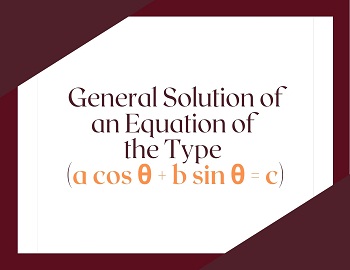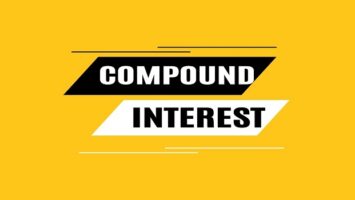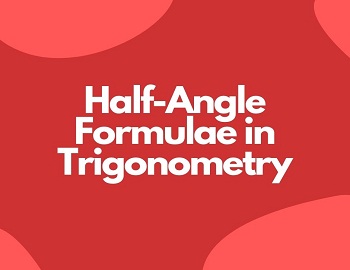Composite Functions:
Consider three non-void sets A, B, and C and let f be a function from A to B and g be a function from B to C. We can combine these two functions to get a new function which may be called the composite or the resultant of these two functions.
The usual way of composition is to first apply f to x to get f(x) and then apply g to f(x) to get the resultant image. Thus, if f: A → B and g: B → C be the two functions, then the composite of f and g, denoted by gof is the function gof: A → C defined by
| (gof) (x) = g[f(x)], for all x ∈ A |
The composite of two functions is sometimes known as the function of a function.
The composite function gof is defined only if, for each x ∈ A, f(x) becomes an element of g so that the g-image of f(x) may be obtained. Thus, for the composition gof to exist, the range of f must be a subset of the domain of g. Similarly, fog exists if the range of g is a subset of the domain of f.

Some Properties of Composite Functions:
- The composition of functions is not commutative i.e., fog ≠ gof.
- The composition of functions is associative i.e., if f, g and h are three functions such that the composition (fog)oh and fo(goh) exist, then [(fog)oh] (x) = [fo(goh)] (x).
- The composition of any function with the identity function is the function itself, i.e., if IA: A → A and f: A → B, then foIA = f. Now, if IB: B → B and f: A → B, then foIB = f.
- The composition of two bijections is a bijection i.e., if f and g are two bijections then fog, as well as gof, are also bijections.
| Example- If f: R → R; f(x) = cos x and g: R → R; g(x) = x3, find fog (π/2) and gof (π/2). Solution- fog(x) = f[g(x)] ⇒ fog(x) = f(x3) ⇒ fog(x) = f(μ), μ = x3 ⇒ fog(x) = cos μ ⇒ fog(x) = cos x3 ∴ fog(π/2) = cos (π/2)3 = cos (π3/8) gof(x) = g[f(x)] ⇒ gof(x) = g(cos x) ⇒ gof(x) = g(μ), μ = cos x ⇒ gof(x) = μ3 ⇒ gof(x) = (cos x)3 ⇒ gof(x) = cos3 x ∴ gof(π/2) =cos3 (π/2) = 0 |
| Example- If R → R is defiend as f(x) = x2 – 2x + 3, find f[f(x)]. Solution: f[f(x)] = f(x2 – 2x + 3) ⇒ f[f(x)] = f(μ), μ = x2 – 2x + 3 ⇒ f[f(x)] = μ2 – 2μ + 3 ∴ f[f(x)] = (x2 – 2x + 3)2 – 2(x2 – 2x + 3) + 3 |
| Example- If f: R → R be given by f(x) = x/(x – 1) and g: R → R be given by g(x) = x2 + 2, find (i) fog(1) (ii) gof(-1). Solution- (i) fog(x) = f[g(x)] ⇒ fog(x) = f(x2 + 2) ⇒ fog(x) = f(μ), μ = x2 + 2 ⇒ fog(x) = μ/(μ – 1) ⇒ fog(x) = (x2 + 2)/(x2 + 2 – 1) ⇒ fog(x) = (x2 + 2)/(x2 + 1) ∴ fog(1) = (12 + 2)/(12 + 1) = 3/2 (ii) gof(x) = g[f(x)] ⇒ gof(x) = g[x/(x – 1)] ⇒ gof(x) = g(μ), μ = x/(x – 1) ⇒ gof(x) = μ2 + 2 ⇒ gof(x) = [x/(x – 1)]2 + 2 ⇒ gof(x) = [x2/(x2 + 1 – 2x)] + 2 ⇒ gof(x) = (x2 + 2x2 + 2 – 4x)/(x2 + 1 – 2x) ⇒ gof(x) = (3x2 – 4x + 2)/(x2 – 2x + 1) ∴ gof(-1) = [3(-1)2 + 4(-1) + 2]/[(-1)2 – 2(-1) + 1] = (3 + 4 + 2)/(1 + 2+ 1) = 9/4 |
| Example- If f(x) = [x] and g(x) = | x – 1 | then evaluate (i) gof(-3/2) (ii) fog(-5/2) Solution- (i) gof(x) = g[f(x)] ⇒ gof(x) = g([x]) ⇒ gof(x) = g(μ) ⇒ gof(x) = | μ – 1 | ⇒ gof(x) = | [x] – 1 | ⇒ gof(x) = | [-3/2] – 1 | ∴ gof(x) = | [-1.5] – 1 | ⇒ gof(x) = | -2 – 1| ⇒ gof(x) = | -3 | ⇒ gof(x) = 3 (ii) fog (x) = f(g(x)) ⇒ fog (x) = f( | x – 1 | ) ⇒ fog (x) = f(μ) ⇒ fog (x) = [μ] ⇒ fog (x) = [ | x – 1 | ] ∴ fog(-5/2) = [ |1 – 5/2 – 1| ] ⇒ fog(-5/2) = [ |1 – 7/2 | ] ⇒ fog(-5/2) = [7/2] ⇒ fog(-5/2) = [3.5] ⇒ fog(-5/2) = 3 |
| Example- If f(x) = [x] and g(x) = | x |, prove that fog(-1/2) + gof(-3/4) – 1 = 0 Solution- fog(-1/2) = f(g(-1/2)) ⇒ fog(-1/2) = f( | -1/2 | ) ⇒ fog(-1/2) = f (1/2) ⇒ fog(-1/2) = [1/2] ⇒ fog(-1/2) = [0.5] ⇒ fog(-1/2) = 0 gof(-3/4) = g(f(-3/4)) ⇒ gof(-3/4) = g([-3/4]) ⇒ gof(-3/4) = g([-0.7]) ⇒ gof(-3/4) = g(-1) ⇒ gof(-3/4) = | -1 | ⇒ gof(-3/4) = 1 Now, fog(-1/2) + gof(-3/4) – 1 = 0 + 1 – 1 = 0 |
| Example- If f(x) = |x + 2| and g(x) = [x – 1], find fog(-3/2). Solution- fog(-3/2) = f(g(-3/2)) ⇒ fog(-3/2) = f([-3/2]) ⇒ fog(-3/2) = f([-3-2/2]) ⇒ fog(-3/2) = f([-5/2]) ⇒ fog(-3/2) = f([-2.5]) ⇒ fog(-3/2) = f(-3) ⇒ fog(-3/2) = f | 3 | ⇒ fog(-3/2) = 3 |









Comments (No)